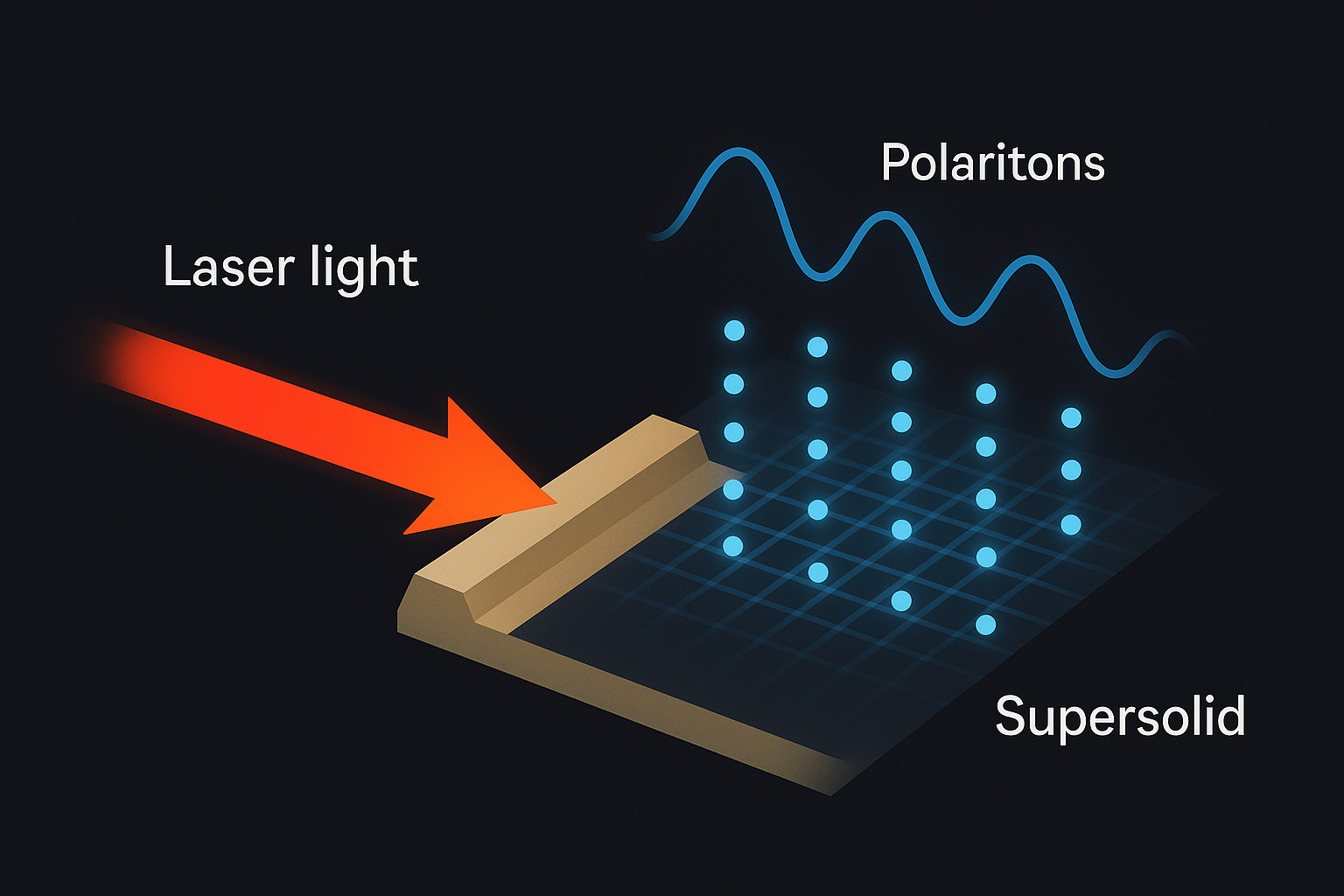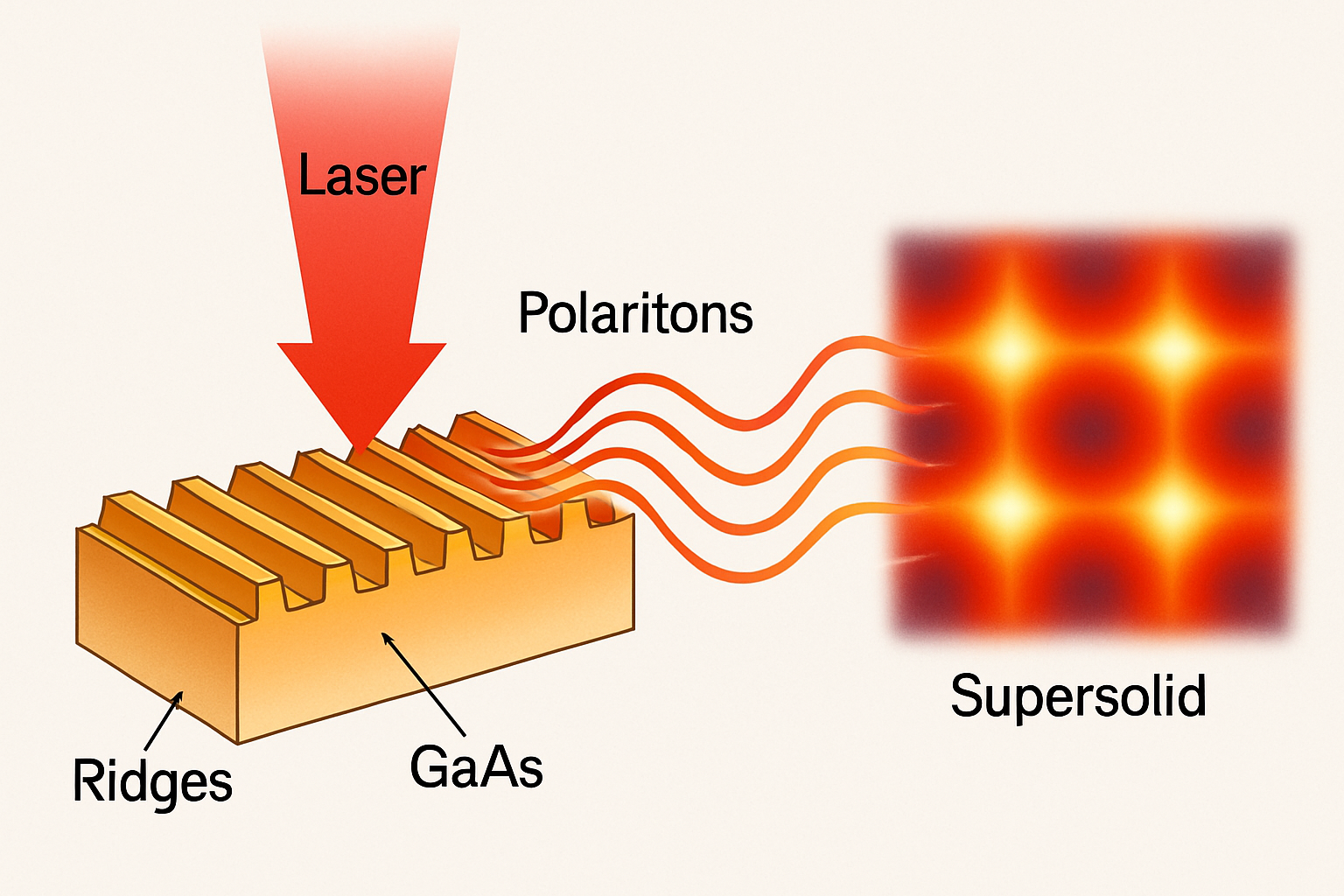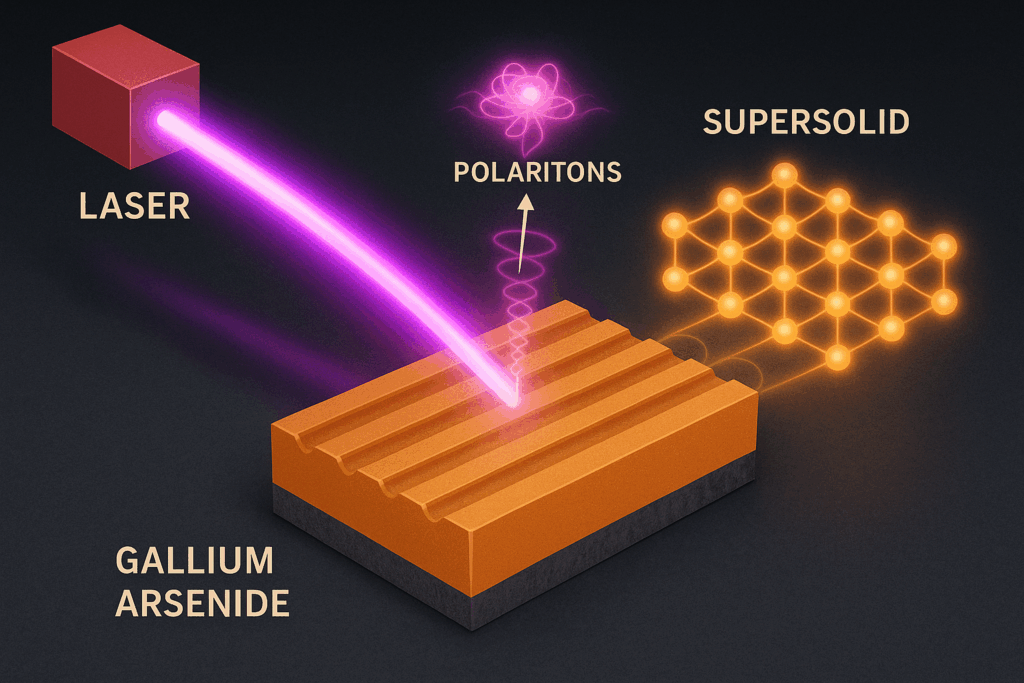Laser Light Transformed Into a Supersolid for the First Time
Adapted & enhanced for clarity by V Denby
In a groundbreaking experiment, a team of international researchers in nanotechnology, engineering, and physics has successfully transformed laser light into a supersolid—a feat previously thought achievable only with ultracold atoms. Their results have been published in the journal Nature, accompanied by a Research Briefing summarizing the breakthrough.



What Is a Supersolid?
A supersolid is a rare and paradoxical state of matter that combines the rigid structure of a solid with the frictionless flow of a superfluid. In quantum physics, these exotic states have been created only under extreme conditions, such as near absolute zero, and until now, only with ultracold atoms. Supersolids defy classical behavior by allowing particles to form ordered, crystalline structures while simultaneously flowing without viscosity.
Turning Light Into a Supersolid
This latest experiment marks the first time that light has been coerced into behaving as a supersolid. The researchers achieved this by firing a laser beam at a specially engineered piece of gallium arsenide, a semiconductor material etched with nanoscale ridges. These ridges served as a confinement structure, steering and modulating the light.
As the laser interacted with the material, it produced polaritons—quasiparticles that are part-light and part-matter. The design of the ridges caused these polaritons to arrange themselves in a structured, periodic pattern while retaining fluid-like properties, effectively forming a supersolid made of light.
How They Verified It
Verifying this novel state required an array of precision measurements. The team demonstrated that the system displayed both crystalline order and superfluid behavior—hallmarks of a supersolid. Notably, the structure had no measurable viscosity, yet retained a fixed, repeating spatial configuration.
This confirms that light, under very specific engineered conditions, can exhibit solid-like and fluid-like properties simultaneously—an extraordinary leap in our understanding of quantum matter.
Why This Matters
Light-based supersolids could open new pathways for studying quantum mechanics and developing advanced optical technologies. Since light is easier to control than ultracold atoms, this discovery could lead to more accessible ways to probe and exploit supersolid behavior, potentially influencing future developments in quantum computing, sensing, and photonics.
The team is already planning further experiments to explore the internal structure and stability of this novel state. They hope this will provide deeper insight into the nature of supersolids and how they could be harnessed in practical applications.